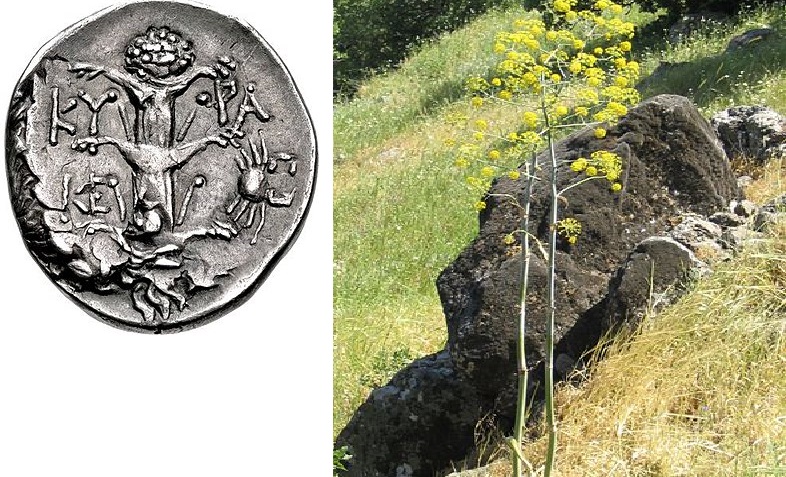
A Turkish botanist is learning how to cultivate what some believe to be the closest living relative to a Classical-era kitchen staple written about by Romans and Greeks.
The golden-flowered “Silphium” was reported by Pliney the Elder as growing in modern-day Libya, and has been translated as being a prescription for everything from “stomach pain to wart removal, baldness and dental pain, for pleurisy and epilepsy, and a balm, according to one lyrical translation, for both the ‘dog-bitten’ and the ‘scorpion-smitten,'” writes Nat Geo.
Silphium was also called for as a key ingredient in many Roman recipes contained within the Apicius, a 475-page cookbook written during the time of Emperor Tiberius. It was written to be prized for its wonderful, even aphrodisiacal smell, and rich, clean flavor.
However Silphium was lost by the time of Nero, who was reportedly to have been given the last known stalk in existence. Since the Middle Ages people have been looking for this delicious medicinal plant, and several candidates represent what are likely relatives, as the historical accounts of the plant being un-farmable outside Libya has led scientists and historians to believe it is extinct.
Silphium, based on its historical depictions on coins from the region of Libya, then-called Cyrenaica, and descriptions of taste, smell, physical shape and size, likely belonged to the genus Ferula, of the family Apicacea, of which there are 220 known species.
They are herbaceous perennial plants growing to 1–4 meters tall, with stout, hollow, somewhat succulent stems. and usually yellow flowers produced in large umbels. They’re sometimes called Giant Fennel, although fennel belongs to a different genus in the same family.
Istanbul University professor Mahmut Miski is growing ferula drudeana, a newly-discovered member of the genus which he believes has all the characteristics of ancient silphium, on the slopes of a volcano in the Cappadocia region of Turkey. There, Miski believes Greek farmers from the 19th century or before were cultivating ferula drudeana either from an earlier time, or having brought it from someplace else.
READ MORE: With Lamb, Coriander, and Leeks, These Decoded Babylonian Recipes Reveal Ancient Culinary Traditions
It’s a tricky historical jigsaw puzzle, as no Roman ruins have turned up a mason jar with “silphium” written on it. Nevertheless, the newly-discovered plant is deeply medicinal, and chemical analysis of the ginseng-like root structure has turned up 30 secondary metabolites that carry anti-inflammatory, anti-cancerous, and perhaps most tellingly of all based on Pliney’s historical records, contraceptive properties.
It also contains shyobunone, found in sage, rosemary, artichoke, and other plants with intoxicating smells.
Professor Miski was shown the ferula drudeana plants growing wild by some Greek-heritage farmers. The farmers showed how sheep and goats would enjoy chewing up the drudeana which matches historian Pliney’s descriptions, and of the amorous behavior of flies following a drink of the plant’s pearl-white sap.
Yet more proof was found when Professor Miski observed its rapid and dispersed growth following rain—another piece of corroborating evidence.
A mainstay in fantasy-fiction, it’s rare that human civilization produces something in olden days that for some reason can’t be replicated in later times.
SIMILAR: Resurrecting an Ancient Fabric More Precious Than Silk That Hasn’t Been Spun for Centuries
Nor is it everyday that someone finds a new kitchen herb. Ferula drudeana, with its wonderful smell, rich flavor, and medicinal qualities would be a wonderful addition to anyone’s pantry, regardless of whether or not it is the fabled silphium, traded at equal worth to silver in the Roman Empire.
PASS This Exciting Historical Discovery Onto Your Friends…



















